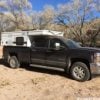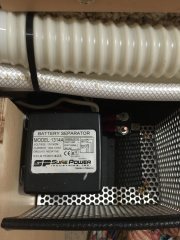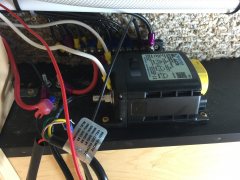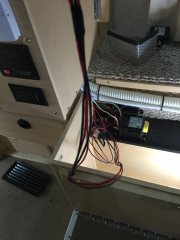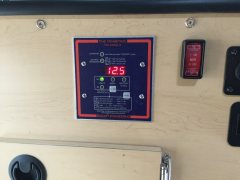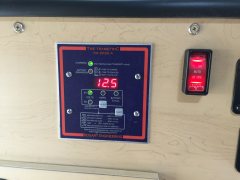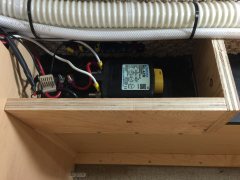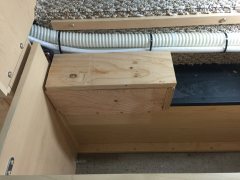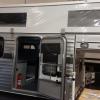There have been several topics and frustrations about charging our camper batteries from the truck.
I researched a few different options and came up with this mod which I thought might be helpful to share.
A special thanks to Ntsqd - his several great posts gave me the idea.
My FWC had been ordered with a compressor fridge that uses a fair amount of power. One of the sources to replenish the camper's batteries is charging directly from the truck's alternator. The stock system for this by FWC does provide some charging ability but has a few drawbacks. The stock system charges through a sure power 1314a battery isolator. This provides power to the camper but as a battery isolator has three main drawbacks:
1- loss of voltage to heat through the isolator
2- the isolator will not turn on if your voltage in the camper is too low (like 12.5 volts or lower). So when you need the power the very most from your truck you cannot get it.
3- No power could ever been transferred from the camper to the truck batteries in an emergency.
I replaced the Sure Power 1314a battery isolator with a Blue Sea ML-ACR with manual control.
First I had to remove the old battery isolator and label the connections for the new system. The Blue Sea ML-ACR was installed in the same position as the Sure Power isolator. It has an addition manual control that needed to be wired to the ML-ACR along with the negative and positive terminals of the camper battery. The wiring did require custom lengths of wire, modifying the wire ends and shrink wrapping the ends for protection. Then I had to pull the wiring and cut a hole for the switch into my camper's power center. Finally, since my Blue Sea ML-ACR was much larger than the prior Sure Power, I had to build a wood box around it to protect it while it was in a storage area of my camper.
The new system is a big improvement from the prior stock setup up. Overall I am very happy with the setup.
Here are some of the benefits of the system:
1- Enhanced charging capacity from the truck. I was able to charge 3-4 amps/hour faster with the new Blue Sea equipment. There is very little loss of energy to heat.
2- I am aware and in control of charging from my truck to camper. I can override the automatic system and connect the batteries to allow charge no matter how low my camper batteries are. The monitor switch always lets me know when the systems are connected. No more suprises when I show up at my camping spot thinking that the truck is charging the camper.
3- My camper's solar system can charge my camper batteries and truck batteries if I want it to. If I only want to charge the camper batteries I can do just that too.
4- If my truck batteries were ever too low to start the truck I could charge them from the camper batteries. This is a great safety feature.
5- A manual switch on the ACR allows you to work on the camper electronics without any power source from the truck if you need to do repairs.
6- In the automatic mode the system functions just like the stock FWC system was meant to. It allows charging of the truck camper batteries from the truck without discharging the truck batteries unless you override the system. It's just better. ![]()
The cost of the modification was about $240. Most of this is the cost of the Blue Sea equipment - $210 for just that.
You could improve your system with just using the Blue Sea SI-ACR. It would be a direct replacement for your battery isolator and the cost of it is only about $75. However you would not get the cool switch to know when you batteries are connected and the ability to override the automatic system if you wanted.
This was a huge positive for me and worth the extra expense.


